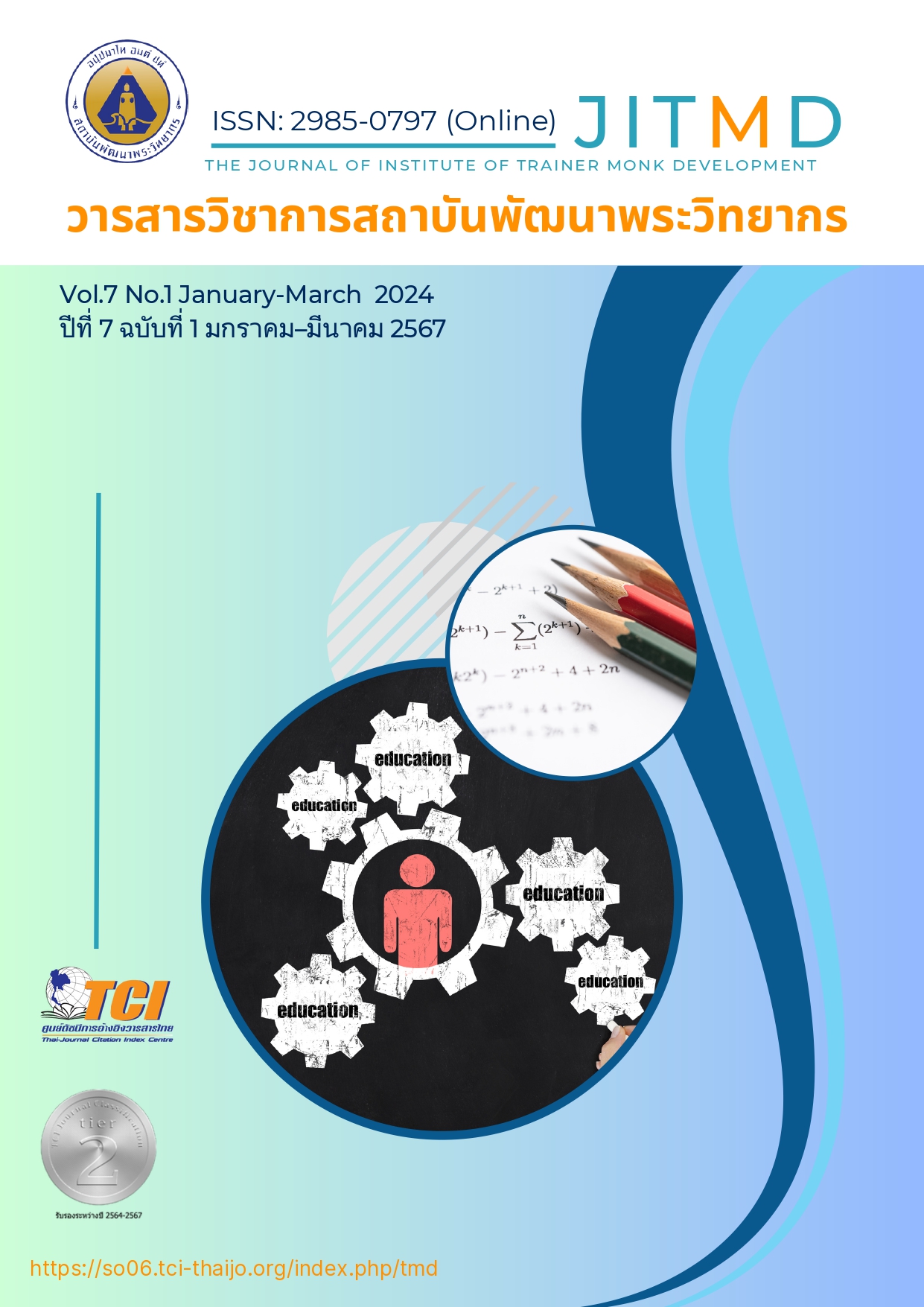Developing a Model for Community Waste Management at Source With Participation of Khukkhak Subdistrict Communities,Takua Pa District, Phang Nga Province
Main Article Content
Abstract
This study This is an action research study between January and March 2023. The objectives are to study 1) the situation and problems of waste management at source, 2) the development of a participatory community waste management model, and 3 ) Results of using the waste management model at source of the participatory community, Khuk Khak Subdistrict, Takua Pa District, Phang Nga Province Population and sample There were two specific groups: a stakeholder group of 30 people and a group of representatives from households in the community, number of 108 people. The process model of Kemmis and MC Targart was used as a framework by applying a participatory planning process. The results of the study found that after developing a waste management model in the community, it was found that there was Waste amount 102.65 kilograms Reduced to 52.34 percent, a waste management model in the community was born, namely 1) creating participation of people in the community By building a community A model for campaigning to separate solid waste from the source 2) Community Waste Welfare Fund 3) Bio-fertilizer 4) Bio-compost for use in nourishing vegetables in community vegetable plots 5) Learning resources Sufficiency economy and non-toxic vegetables and 6) innovation “4+1 Four Plus One, my house separates trash”.
Article Details

This work is licensed under a Creative Commons Attribution-NonCommercial-NoDerivatives 4.0 International License.
บทความที่ได้รับการตีพิมพ์เป็นลิขสิทธิ์ของวารสารวิชาการสถาบันพัฒนาพระวิทยากร
ข้อความที่ปรากฎอยู่ในบทความที่ได้รับการตีพิมพ์ในวารสาร ถือเป็นความรับผิดชอบของผู้เขียนบทความ และข้อคิดเห็นนั้นไม่ถือว่าเป็นทัศนะและความรับผิดชอบของกองบรรณาธิการวารสารวิชาการสถาบันพัฒนาพระวิทยากร
References
กรมควบคุมมลพิษ กระทรวงทรัพยากรและสิ่งแวดล้อม. (2564). รายงานสถานการณ์มลพิษของประเทศไทย ปี 2564. กรุงเทพฯ: กรมควบคุมมลพิษ.
จันทร์เพ็ญ มีนคร. (2554). การมีส่วนร่วมของประชาชนในการจัดการขยะมูลฝอยของชุมชนตําบลบางนางลี่อําเภออัมพวาจังหวัดสมุทรสงคราม. กรุงเทพฯ: มหาวิทยาลัยราชภัฏสวนสุนันทา.
ทิวา ประสุวรรณ และคณะ. (2559). การจัดการขยะแบบมีส่วนร่วมขององค์กรปกครองส่วนท้องถิ่นและชุมชน ในตำบลบ้านแลง อำเภอเมืองระยอง จังหวัดระยอง. วารสารวิจัยและพัฒนาวไลยอลงกรณ์ในพระบรมราชูปถัมภ์, 46(11): 45-61.
นงกต สวัสดิชิตัง และคณะ. (2557). การพัฒนารูปแบบการจัดการขยะมูลฝอยของชุมชนในเขตเทศบาลนครอุดรธานี. วารสารบัณฑิตศึกษา มนุษยศาสตร์ สังคมศาสตร์, 3:47-. 64.
ศุภรินทร์ อนุตธโต และคณะ. (2559). รูปแบบที่เหมาะสมในการจัดการขยะมูลฝอยชุมชนเทศบาลตำบลหนองควาย อำเภอหางดง จังหวัดเชียงใหม่. วารสาร MFU Connexion, 6(1): 53-77.
สำนักงานสิ่งแวดล้อมและควบคุมมลพิษที่ 15 ภูเก็ต. (2564). รายงานสถานการณ์มลพิษที่ 15 ภูเก็ต. สืบค้นเมื่อวันที่ 18 กุมภาพันธ์ 2558 จาก https://epo15.pcd.go.th/frontpage
สุริยะ หาญพิชัย และจันทร์ฉาย จันทร์ลา. (2561). การจัดการขยะแบบมีส่วนร่วมของเทศบาลตำบลลำนารายณ์ อำเภอชัยบาดาล จังหวัดลพบุรี. วารสารเทคโนโลยีสุรนารี, 12(1): 1-14.
อารีย์ พลภูเมือง และคณะ. (2560). การพัฒนาระบบคัดแยกมูลฝอยในชุมชนแบบมีส่วนร่วมเขตเทศบาลตำบลเมืองสรวง อำเภอเมืองสรวง จังหวัดร้อยเอ็ด. วารสารเครือข่ายวิทยาลัยพยาบาลและการสาธารณสุขภาคใต้, 4(ฉบับพิเศษเมษายน): 160-171.
Kemmis, S & McTaggart, R. (1988). The Action Research Planer (3rd ed.). Victoria: Deakin University.


